 |
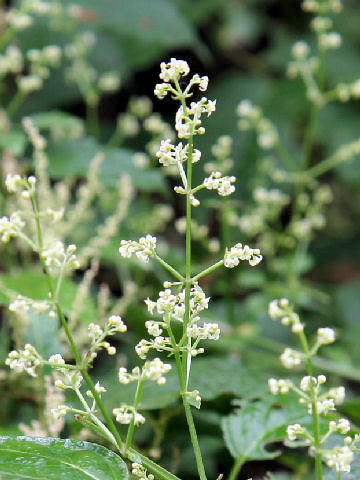

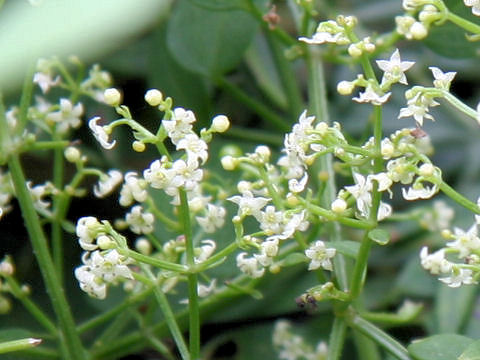

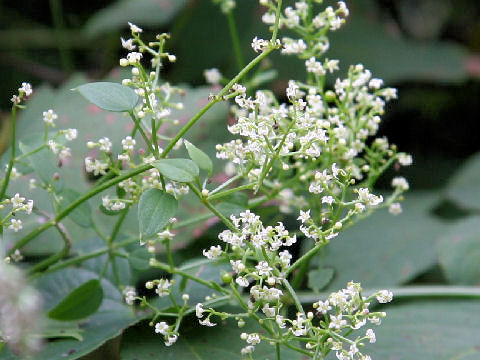

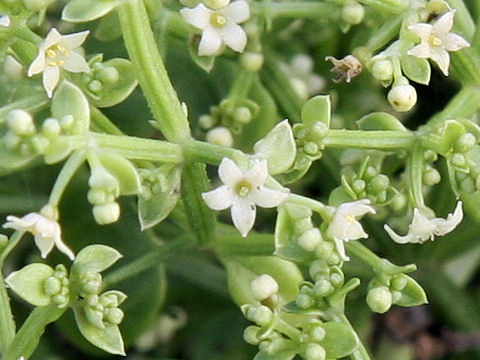

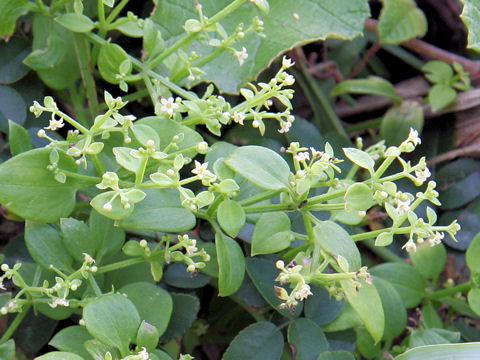

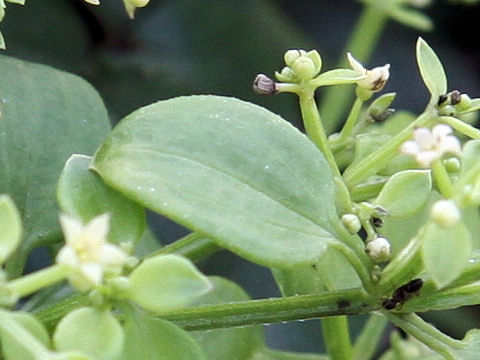



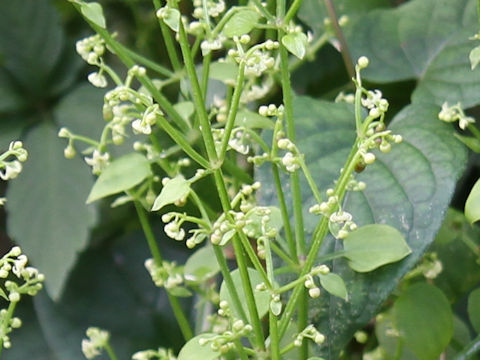



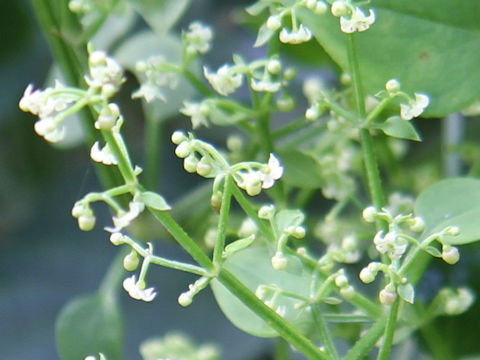

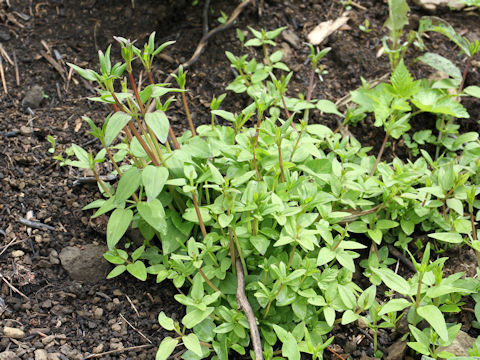

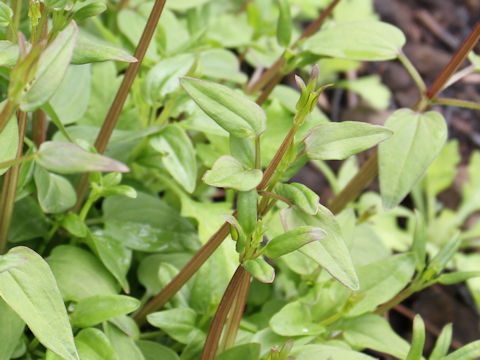

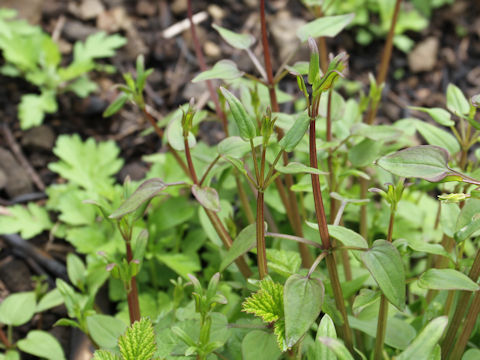

|

|
わが国の本州から四国・九州それに朝鮮半島や中国に分布しています。山野にふつうに生え、他の草木などに絡みついて伸びます。茎には4稜があり、下向きの棘が生えます。葉は三角状卵形から狭卵で、4個が輪生します。このうちの2個は托葉が発達したもの。8月から10月ごろ、葉腋から集散花序をだし小さな淡黄緑色の花を咲かせます。根はひげ根で、古い時代から茜染めの原料とされてきました。茜色とは、もともと「あずき」の種皮のような濃い赤紫色のことで、いまでは夕焼けような朱橙色の意味に変化しています。中国語では「東南茜草(dong nan qian cao)」と呼ばれます。
 (茜色: #b22c46) (茜色: #b22c46)
|
|
|

|
アカネ科アカネ属の多年草で、学名は Rubia argyi (syn. Rubia akane)。英名はありません。
|

|
The "Akane" (Rubia argyi) belongs to Rubiaceae (the Madder family). It is a perennial herb that is native to Honshu, Shikoku and Kyushu in Japan, as well as the Korean Peninsula and China. This herb grows in fields or mountains and climbs up adjacent plants. The stem is quadrangular and bears downward spines. The leaves are triangular-ovate to narrow ovate and 4 whorled. Two leaves of them are developed stipulars. The cymes are borne on the axils and bloom pale yellowish-green flowers from August to October. The fibrils have been used for dye from the ancient days. In Chinese, it is called "東南茜草" (dong nan qian cao).
|

|
[上・中1〜2] 奈良県御所市関屋「金剛山」にて、2006年09月05日撮影。
[中3〜中5] 千葉県銚子市「犬吠埼」にて、2007年10月11日撮影。
[中6〜中9] 茨城県桜川市「筑波山」にて、2014年09月13日撮影。
[中10〜11・下] 山形県小国町小玉川にて、2020年05月22日撮影。
|














